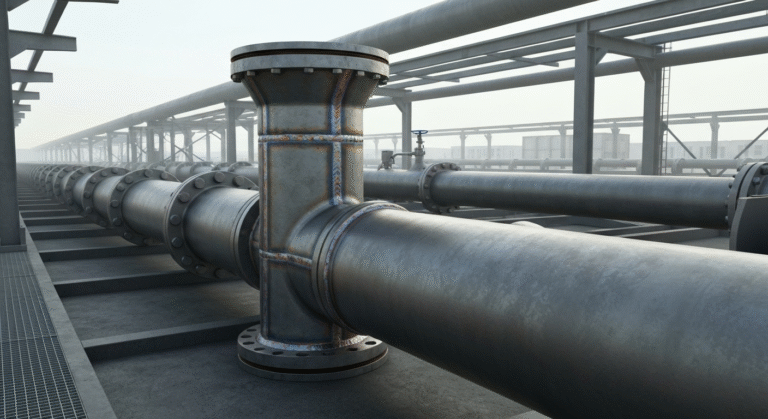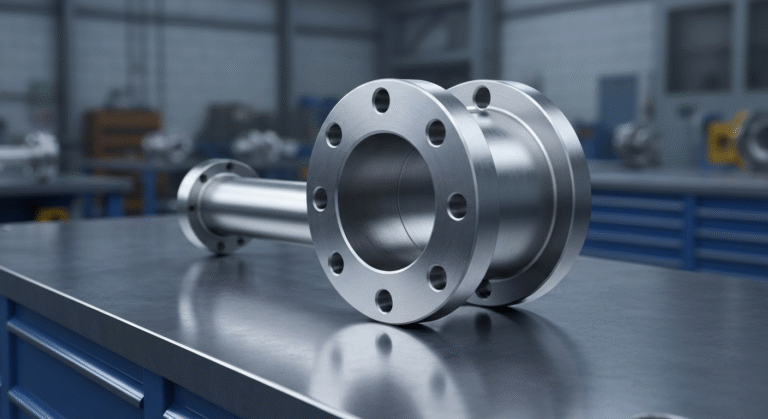-
Yinzhuang Industrial zone,Mengcun county,Cangzhou city,Hebei province,China

Seamless vs Welded Steel Pipe Elbows: Processes, Performance, and Applications
Steel pipe elbows are critical components in industrial piping systems, and their manufacturing methods greatly influence performance, durability, and cost. Here, we detail how seamless elbows and welded elbows are produced, highlighting key differences in raw materials, processes, performance, appearance, sizes, and cost. We’ve also incorporated important keywords such as carbon steel elbow, stainless steel elbow, and butt weld elbow to enhance the article’s relevance.
Table of Contents
How is the Seamless Elbow Made?
Seamless elbows are produced from a single piece of steel pipe without any joints. The primary method used is hot push technology. The process involves:
- Heating and Forming: A billet is heated and then pushed forward by a specialized core machine. This system includes a mold and heating device that work together to initiate the plastic deformation of the metal.
- Controlled Deformation: As the heated billet enters the mold, the inner arc is compressed while the metal compensates for wall thinning in other areas. This controlled deformation ensures that the final elbow has a uniform wall thickness and precise angle.
- High-Quality Output: The hot push forming process produces a seamless elbow that boasts a smooth appearance and excellent structural integrity. This is especially critical for applications involving carbon steel elbow and stainless steel elbow, where consistent performance under high pressure is required.
Because there is no welding involved, seamless elbows can withstand extremely high pressures without the risk of cracking at a seam. This advantage makes them highly suitable for demanding environments like thermal systems, boilers, and high-pressure pipelines.

How is the Welded Elbow Made?
Welded elbows are manufactured from either welded steel pipes or iron plates. Their production process includes:
- Material Selection: For elbow diameters below DN600, steel pipes are used; for larger diameters (above DN600), steel plates are bent and then welded.
- Bending and Welding: The process starts with bending the steel plate to the desired curvature. The bent pieces are then joined using welding techniques. In the case of welded elbows, butt weld methods (often referred to as butt weld elbow techniques) are applied to join the edges.
- Appearance and Efficiency: Although many welded elbows are polished to hide the welding seam, the welded joint remains a potential weak point under extreme pressure. Nonetheless, the production process offers high efficiency and cost savings, making welded elbows popular in industries where the operating pressure is comparatively lower—such as in aerospace, automotive, and electronics.
Key Differences and Considerations
- Appearance:
- Seamless Elbows: Display a uniform, uninterrupted surface free of weld lines.
- Welded Elbows: May show welding seams unless they have been polished off. However, some products are marketed as “fake seamless elbows” by hiding these seams, which can only be detected using specialized testing equipment.
- Manufacturing Process:
- The seamless and welded production processes share similarities, especially when using hot push technology. However, welded elbows made from steel plates undergo additional bending and welding steps.
- Performance and Usage:
- Seamless Elbows: Typically offer higher pressure capacity and strength. They are essential in high-pressure applications and are often the choice for systems using carbon steel elbow and stainless steel elbow components.
- Welded Elbows: While efficient and cost-effective, they generally support about 20% less working pressure compared to seamless elbows. The welding seam is usually the weakest part, potentially limiting performance under extreme conditions.
- Available Sizes:
- Seamless elbows are generally produced up to a maximum outside diameter (OD) of 24 inches (609.6 mm) by most Chinese manufacturers.
- Welded elbows, including those fabricated using butt weld elbow techniques, can be manufactured in a much wider range of sizes—from 1-1/2 inches (48.3 mm) up to 100 inches (2540 mm).
- Cost and Prices:
- The cost of seamless elbows is usually higher due to the quality of raw materials and specialized manufacturing equipment. However, due to market pressures, welded elbows can sometimes become more expensive. In such cases, purchasing a seamless elbow might be more cost-effective, especially for high-demand applications.

Conclusion
Choosing between seamless and welded elbows depends on the specific needs of your application. Seamless elbows, with their consistent wall thickness and superior pressure handling, are ideal for critical applications in thermal systems, high-pressure pipelines, and industries using carbon steel elbow and stainless steel elbow. On the other hand, welded elbows, including those made with butt weld elbow methods, offer a cost-efficient solution for applications where the pressure demands are less severe.
For the best quality, manufacturers such as Huayue offer ASTM A234 WPB seamless steel pipe elbows, ensuring both performance and reliability in demanding industrial environments.


